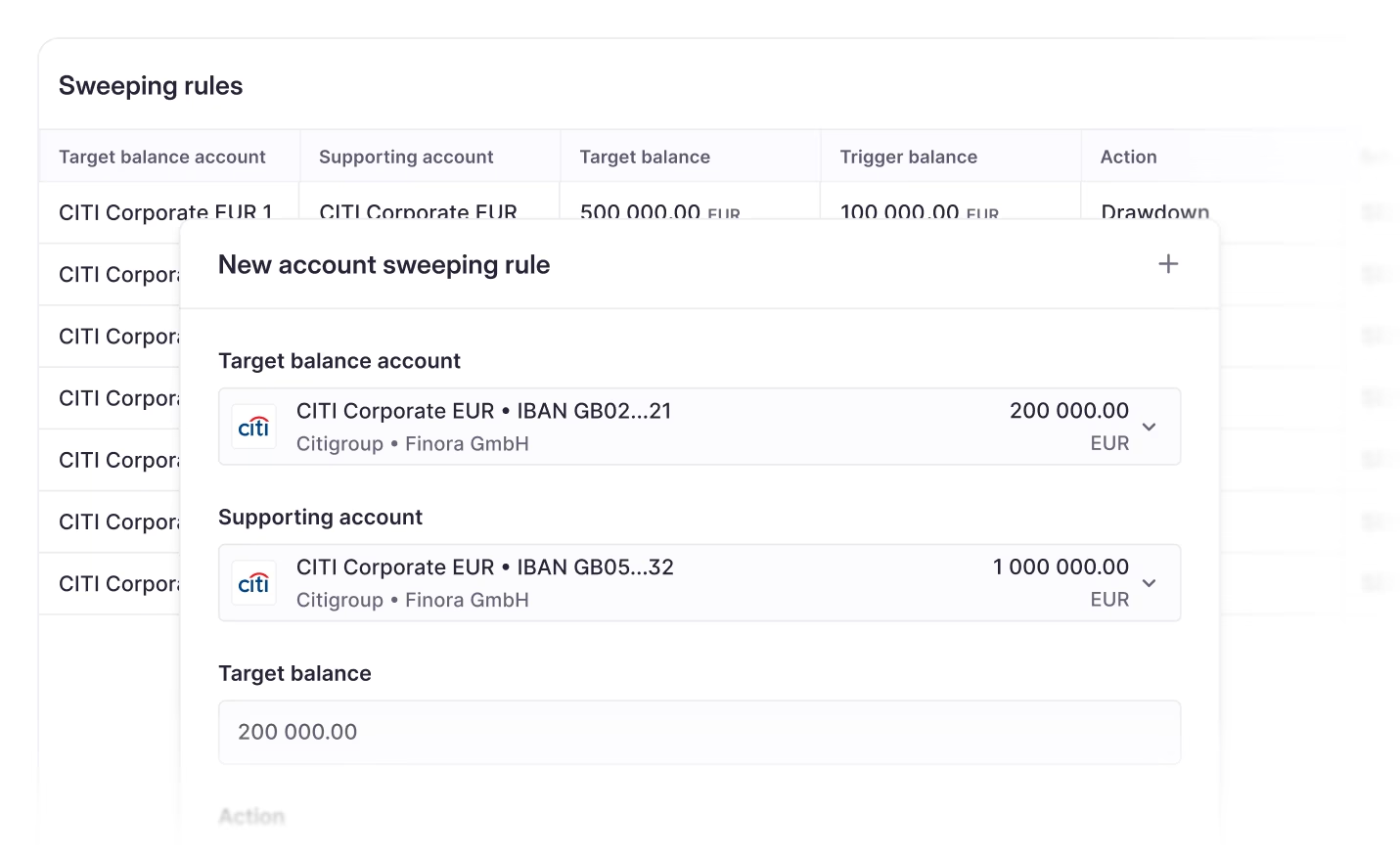What is sweeping?
Sweeping is the automatic transfer of funds between bank accounts to optimize cash utilization across an organization.

Introduction to sweeping
Sweeping is a core treasury management technique used to keep cash productive and balanced across accounts. It automatically transfers surplus funds between subsidiary and central accounts to maintain target balances and ensure liquidity across the group.
This automation helps companies maximize interest income, reduce overdraft costs, and optimize cash usage across entities. Sweeping is usually performed at the end of each business day, though some setups run intraday or on demand. It’s often part of a wider cash pooling structure that gives treasurers full visibility and control over group liquidity.
Types of sweeping arrangements
The most common arrangements fall into two main categories: zero-balancing and target-balancing.
In a zero-balancing (ZBA) structure, all participating accounts are swept down to a zero balance daily. Their surplus cash is moved to a central concentration account, consolidating the group's liquidity.
In a target-balancing structure, each participating account maintains a predefined minimum or target balance. Any amount above or below that threshold is automatically transferred to or from the master account to restore the desired balance.
Some companies also use two-way sweeping, where funds move both up and down between accounts, allowing the central account to provide liquidity to subsidiaries and receive excess funds when available.
The sweeping process
A typical process begins with the bank or treasury platform monitoring account balances at a defined cut-off time. The system calculates the amount needed to be transferred to reach target levels. Funds are then moved automatically, often using internal bank transfers that settle instantly.
These movements are recorded in the company’s treasury or ERP system to maintain an accurate view of group liquidity. Sweeping can also include limits, approval rules, and predefined hierarchies to ensure compliance with internal policies and banking regulations.
Advantages and limitations
Sweeping offers significant financial and operational advantages. It ensures cash is always optimally allocated, minimizing idle balances and reducing borrowing needs. By concentrating liquidity, companies can negotiate better interest terms, improve yield on surplus cash, and simplify cash forecasting and reporting.
However, sweeping arrangements require careful setup and monitoring. Differences in time zones, currencies, and bank cut-off times can affect accuracy. Cross-border sweeps can also face regulatory limits, such as rules on intercompany lending or local restrictions on fund movements. Treasury teams must design structures to comply with these requirements while maintaining visibility and control.
How Atlar can help with sweeping
Atlar lets finance teams automate sweeping between accounts through a single connected platform. Target balances and one- or two-way sweeps can be defined to move cash automatically across banks, currencies, and entities. With real-time connectivity and automated transfers, Atlar provides full visibility over group liquidity while minimizing manual work and keeping funds optimally allocated.
You can unsubscribe anytime.
Further reading
See Atlar in action.
Enter your work email to watch a live product demo.


